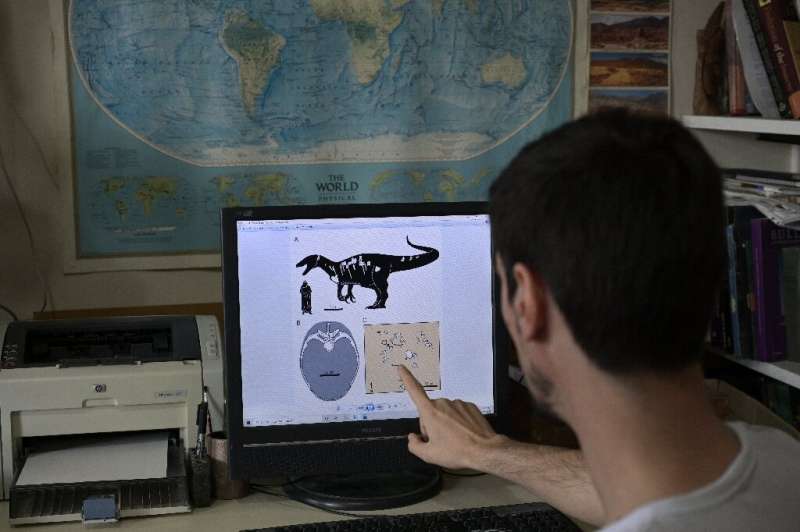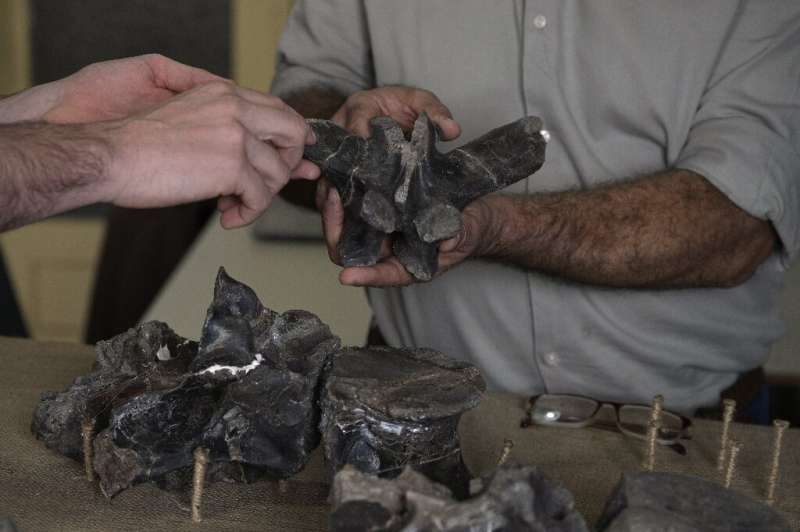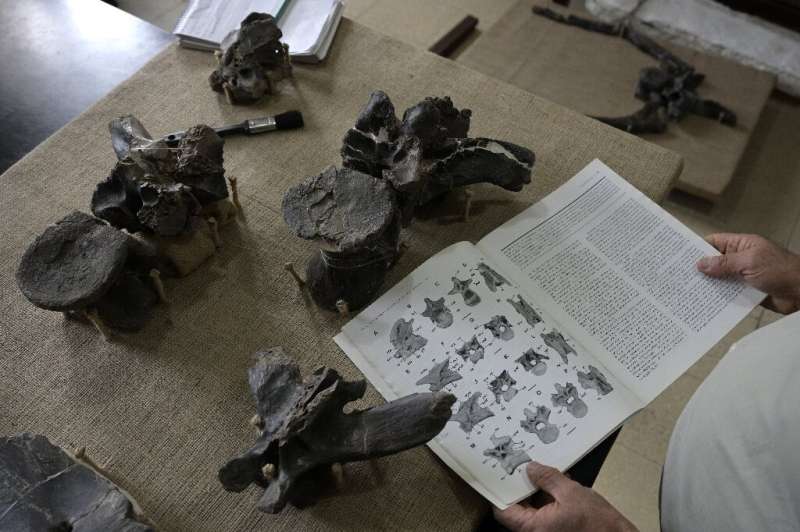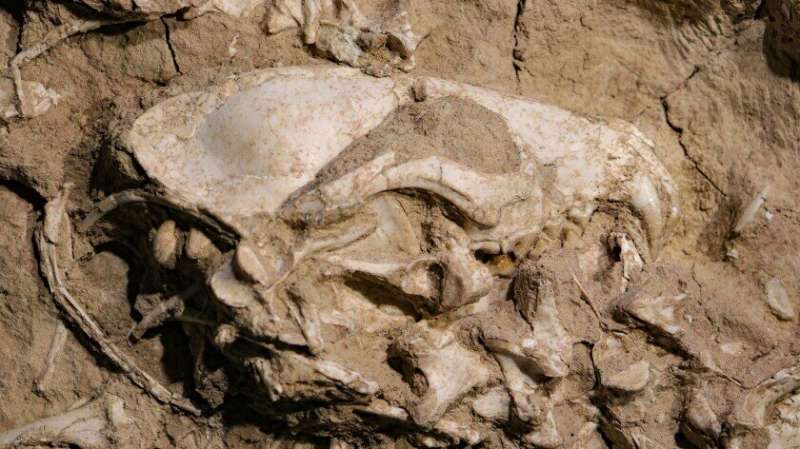Flood Basalt Eruptions: NASA Warns That Some Volcanoes Could Warm Climate, Destroy Ozone Layer
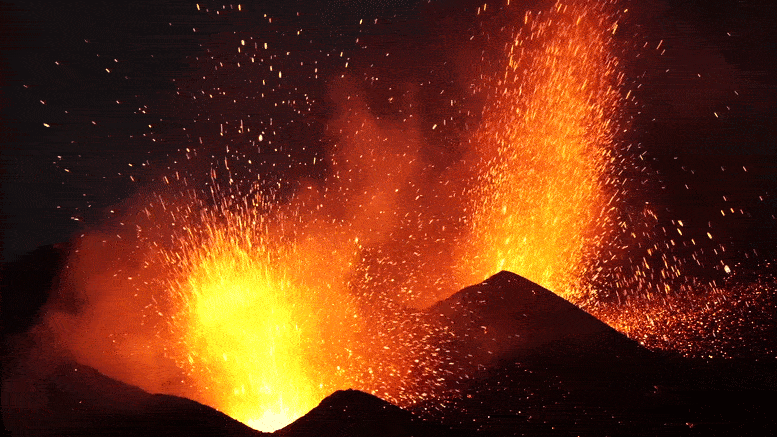
A new NASA climate simulation suggests that extremely large volcanic eruptions called “flood basalt eruptions” could significantly warm Earth’s climate and devastate the ozone layer that shields life from the Sun’s ultraviolet radiation.
The findings contradict prior research that found these volcanoes cool the climate. The simulation also suggests that while extensive flood-basalt eruptions on Mars and Venus may have helped warm their climates, they may have also doomed the long-term habitability of these worlds by contributing to water loss.
A new NASA climate simulation finds that extremely large volcanic eruptions called “flood basalt eruptions” might significantly warm Earth’s climate and devastate the ozone layer that shields life from the Sun’s UV radiation. Credit: NASA/GSFC/James Tralie
Unlike brief, explosive volcanic eruptions such as Pinatubo or January’s Hunga Tonga-Hunga Ha‘apai that occur over hours or days, flood basalts are regions with a series of eruptive episodes lasting perhaps centuries each, and occurring over periods of hundreds of thousands of years, sometimes even longer. Some happened at about the same time as mass-extinction events, and many are associated with extremely warm periods in Earth’s history. They also appear to have been common on other terrestrial worlds in our solar system, such as Mars and Venus.
“We expected intense cooling in our simulations,” said Scott Guzewich of NASA’s Goddard Space Flight Center in Greenbelt, Maryland. “However, we found that a brief cooling period was overwhelmed by a warming effect.” Guzewich is lead author of a paper about this research that was published on February 1, 2022, in the journal Geophysical Research Letters.

Image of a flood-basalt deposit on Mars in the Marte Vallis region taken by the High Resolution Science Imaging Experiment (HiRISE) instrument on board NASA’s Mars Reconnaissance Orbiter spacecraft. Credit: NASA/University of Arizona/HiRISE
While the ozone loss was not a surprise, the simulations indicated the potential magnitude of the destruction, “about two-thirds reduction over global average values, roughly equivalent to the whole planet having an ozone thinning comparable to a severe Antarctic ozone hole,” said Guzewich.
The researchers used the Goddard Earth Observing System Chemistry-Climate Model to simulate a four-year-long phase of the Columbia River Basalt (CRB) eruption that occurred between 15 million and 17 million years ago in the Pacific Northwest of the United States. The model calculated the effects of the eruption on the troposphere, the turbulent lowest layer of the atmosphere with most of the water vapor and weather, and the stratosphere, the next layer of the atmosphere that is mostly dry and calm. CRB eruptions were likely a mix of explosive events that sent material high into the upper troposphere and lower stratosphere (about 8 to 10.5 miles or 13 to 17 kilometers altitude) and effusive eruptions that did not extend above 1.9 miles (about 3 kilometers) altitude. The simulation assumed that explosive events happened four times per year and released about 80% of the eruption’s sulfur dioxide gas. They found that globally, there was a net cooling for about two years before the warming overwhelms the cooling effect. “The warming persists for about 15 years (the last two years of the eruption and then another 13 years or so),” said Guzewich.
“We expected intense cooling in our simulations. However, we found that a brief cooling period was overwhelmed by a warming effect.” — Scott Guzewich
The new simulation is the most comprehensive yet done for flood basalt eruptions and integrates the effects of atmospheric chemistry and climate dynamics on each other, revealing an important feedback mechanism that earlier simulations mi
“Eruptions like the one we simulated would emit massive amounts of sulfur dioxide gas,” said Guzewich. “Chemistry in the atmosphere quickly converts these gas molecules to solid sulfate aerosols. These aerosols reflect visible sunlight, which causes the initial cooling effect, but also absorb infrared radiation, which warms the atmosphere aloft in the upper troposphere and lower stratosphere. Warming this region of the atmosphere allows water vapor (that’s normally confined near the surface) to get mixed into the stratosphere (which is normally very dry). We see a 10,000% increase in stratospheric water vapor. Water vapor is a very effective greenhouse gas, and it emits infrared radiation that warms the planet’s surface.”
The predicted surge of water vapor into the stratosphere also helps explain the severity of the ozone layer depletion. “Ozone layer depletion happens in a couple different ways,” said Guzewich. “Following the eruption, the circulation of the stratosphere changes in ways that discourage ozone formation. Second, all that water in the stratosphere also helps destroy ozone with the hydroxyl (OH) radical.”
Flood basalts also release carbon dioxide, a greenhouse gas as well, but they don’t appear to emit enough to cause the extreme warming associated with some eruptions. The excess heating from stratospheric water vapor could provide an explanation.
Although Mars and Venus may have had oceans of water in the distant past, both are currently very dry. Scientists are investigating how these worlds lost most of their water to became inhospitable for life. If the surge of water vapor into the upper atmosphere predicted by the simulation is realistic, extensive flood volcanism could have contributed to their arid fates. When water vapor is lofted high in the atmosphere, it becomes susceptible to being broken apart by sunlight, and the lightweight hydrogen atoms from the water molecules can escape to space (water is two hydrogen atoms bound to an oxygen atom). If sustained over long periods, this could deplete oceans
Reference: “Volcanic Climate Warming Through Radiative and Dynamical Feedbacks of SO2 Emissions” by Scott D. Guzewich, Luke D. Oman, Jacob A. Richardson, Patrick L. Whelley, Sandra T. Bastelberger, Kelsey E. Young, Jacob E. Bleacher, Thomas J. Fauchez and Ravi K. Kopparapu, 1 February 2022, Geophysical Research Letters.
DOI: 10.1029/2021GL096612
The research was funded by the NASA Goddard Sellers Exoplanet Environments Collaboration and NASA’s Center for Research and Exploration in Space Science and Technology, NASA Cooperative Agreement Award #80GSFC17M0002.



